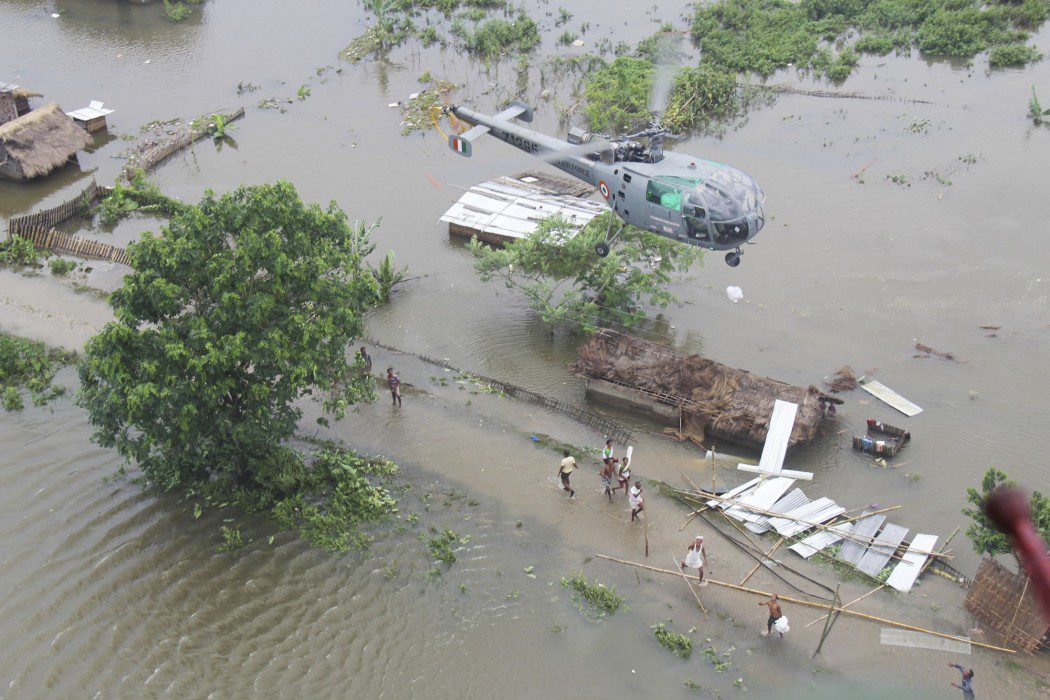Assam, as a state, has endured a severe battering this year. From the mass influx due to the recent SMS threats, to the more recent bandhs as part of the nationwide protest regarding gas and LPG prices, to ever persistent border issues with Mizoram and Bangladesh, life in Assam has been a constant struggle for normalcy. None of the above were however, as immediately life threatening and prolonged as the massive floods and landslides that hit Assam in the monsoons in June-July this year.
Consider the cost to human living itself. Apart from the triple digit death count, a staggering 2 million people have been displaced, with around a quarter of them forced into relief camps. More than 700 relief camps were required to house the displaced and this was just July. Since then, flash floods and the common plague of governmental disorganisation have added to the chaos of the aftermath. The near future looks to be equally grim with the number of domestic animal deaths and destroyed paddy fields sure to add to the woes of the Assamese. Entire livelihoods have been irreplaceably destroyed in these floods. Factor in the general government apathy, precedent in long term disaster management, and that future gloom starts to look prolonged.
Assam is also one of India’s more significant states in environmental terms. It is home to five National Parks and a few more wildlife sanctuaries, of which two – Kazirangaand Manas National Parks – are designated World Heritage Sites. Such a concentrated zone of rich biodiversity is bound to be severely affected in the wake of a natural disaster of such magnitude.
Take Kaziranga as an example –it is home to the one horned Indian rhino, the endangered Bengal tiger and a host of other animal and bird species including the Asian elephant. During the floods, Kaziranga alone is estimated to have lost nearly six hundred individual animals. The problem for Kaziranga, Manas National park and the other surrounding parks and sanctuaries, is that Assam is criss-crossed by rivers around these areas, most notably by the mighty Brahmaputra and the lesser Manas. When the levee breaks (as it did during the floods), the result is nothing short of alarming.
Apart from the obvious drowning due to floods, there are several other indirect reasons for animal deaths. Firstly, panicking animals, fleeing from the floods, tend to stray out of the parks as the barriers and the anti-poaching infrastructure are either destroyed or more easily negotiated. This either leads them conveniently into the hands of waiting poachers or into motorways, road ways and dangerous human contact. Although the government applied a speed limit within these motorways, a lack of implementation due to a thinly stretched police and administrative force meant that these limits were largely ignored and thus rendered ineffective. Animal carcasses have therefore been found in large numbers on highways in Assam. Not only is this unfortunate in itself, the rotting carcasses of wild and domestic animals alike have made living in relief camps a potential health hazard.
Assam has witnessed floods of this magnitude in the past as well. In 1988 and 1998, the human and economic cost of floods was similar. And yet, the preparedness of the authorities has been severely lacking. Government apathy has again led to greater disaster than it should have been. For a democratically elected government whose mandate is derived from the people, little is given back as we move from one natural disaster to the next.














